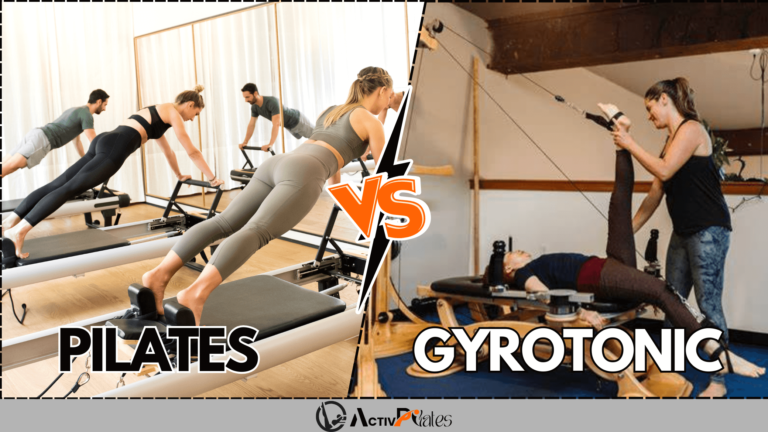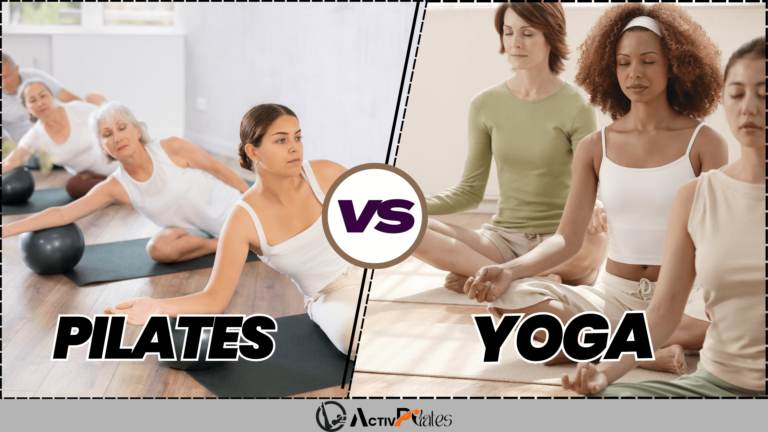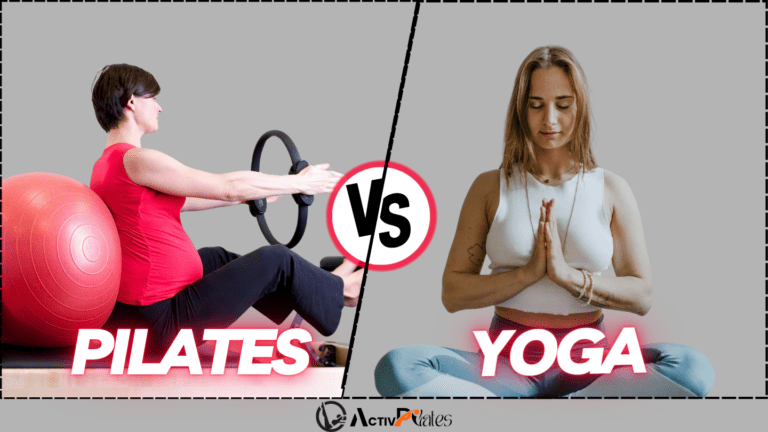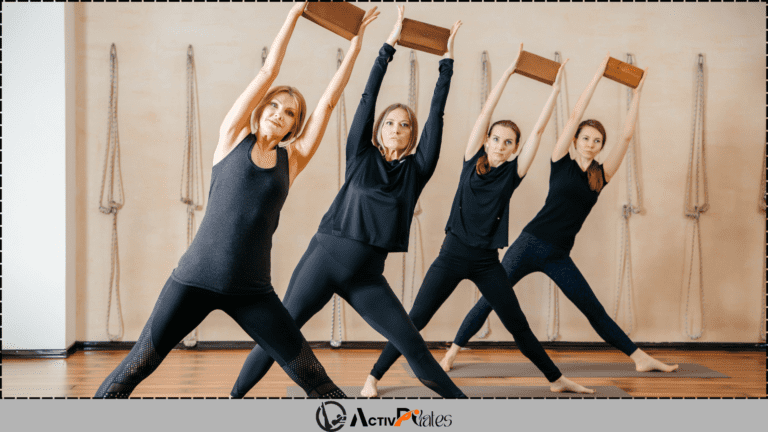Pilates vs Calisthenics: Which is Better?

There are two major styles of Pilates in the world: Classical Pilates and Contemporary Pilates, whose techniques, equipment, and philosophies significantly differ from each other. They offer different benefits for beginners and advanced practitioners for Building Core Strength, Toning Muscles and Sculpting.
What Is Pilates?
Pilates is a low impact moving exercise, enhancing muscle tone, muscle engagement, controlled breathing and stability, firstly used as a way for dancers to recover from injury. But now-a-days, many individuals other than dancers do Pilates for its health benefits.
These exercises work the abdominals, lower back, hips, and glutes, as well as the rest of the body performed on a mat or specific equipment such as the Reformer, improves alignment and flexibility while also strengthening the core that promotes attentive movement and regulated breathing, which aids in body awareness and coordination.
Pilates is Mind-Body Exercise Using Equipment
Use of Pilates equipments like Reformers, Mats, Cadillac, Wunda Chairs and others play a vital role in providing stability, resistance and support that contributes to mind-body connection. Integrating mental focus and physical strength as a result of mind-body exercise using equipment supports panoramic wellness for physical, mental and emotional balance.
Pilates Relies on Whole Body Movements and Core Activation
Whole body movements in Pilates means engaging multiple muscle groups simultaneously in an exercise to improve coordination and balance including “Single-Leg Stretch” exercise, playing sports, lifting groceries, or doing everyday tasks for functional strength, doing “Plank” or “Teaser” to enhance muscle activation. Proper focusing technique in Pilates, inhale and exhale deeply to integrate breath, correlation with other exercise with consistency Pilates relies on whole body movements and core activation provide a comprehensive workout for the stability, strength and flexibility.
What Is Calisthenics?
Calisthenics is the kind of workout that requires no equipment, uses one’s own body resistance, training of body movement is no more or less grounded in a single area to build strength and core muscles. Most Calisthenics exercises like push-up, pull-up and squats need no equipment and are suitable for individuals of all ages and fitness levels.
Bodyweight Exercise Using Minimal Equipment
Usually the body of a Pilates performer uses its own resistance but with the help of minimal equipment like Mat, Resistance Bands, Dumbbells or Kettlebells, Stability Ball, Pull-Up Bar can enhance the body workout of individuals and provide a variety of exercises. By using these equipment, one can do these exercises such as Push-ups for chest, shoulders, and triceps, Squats for quadriceps, hamstrings, and glutes workout, Planks for core activation and stability Lunges for the forward and backward work for legs and glutes, Burpees for full-body workout to enhance cardiovascular fitness, Mountain Climbers to enhance cardio and core strength, Glute Bridges to target the glutes and lower back, also results as stay fit without the need for a fully equipped gym.
Features of Pilates and Calisthenics
| Features | Pilates | Calisthenics |
|---|---|---|
| Focus | Core strength, flexibility, and posture | Bodyweight strength, mobility, and coordination |
| Equipment | May include mats, reformers, and other tools | Bodyweight only |
| Impact | Low impact | Can be high impact |
| Difficulty | Beginner-friendly | May be challenging for beginners |
| Goals | Enhance posture, flexibility, and balance | Boost strength, power, and mobility |
| Benefits | Increased core strength, flexibility, and posture | Improved strength, power, mobility, and coordination |
| Examples | Pilates mat routines, reformer sessions, Cadillac exercises | Bodyweight squats, push-ups, pull-ups, dips |
Suitable for | Individuals of all fitness levels, including beginners | Those with some background in strength training |
Equipment Needed | Mat, reformer, and Cadillac machine | No additional equipment required |
Create a Workout Routine
| Workout | Time | Progress |
|---|---|---|
| Warm-Up | 5 – 10 minutes | Light cardio, Dynamic stretches |
| Main Workout (40 – 45 Min) | ||
| Squats | 6 – 8 minutes | 3 sets of 8 – 12 reps |
| Deadlifts | 7 – 9 minutes | 3 sets of 6 – 10 reps |
| Bench Press | 6 – 8 minutes | 3 sets of 8 – 12 reps |
| Pull-Ups | 6 – 8 minutes | 3 sets of as many reps as possible |
| Overhead Press | 6 – 8 minutes | 3 sets of 8 – 12 reps |
| Rows | 6 – 8 minutes | 3 sets of 10 – 15 reps |
| Cool Down (5 – 10 Min) |
Tips for Success:
- Maintain Proper Form
- Progress Gradually
- Stay Consistent
Progressive Overload and Compound Exercise
| Overload Works | Before Overload | After Overload |
|---|---|---|
| Increase Weight | Lifting 10 pounds for bicep curls | Weight Up-to 12 pounds |
| Increase Repetitions | Doing 8 reps of squats | Increasing to 12 reps |
| Increase Sets | 3 sets of an exercise | 4 sets of an exercise |
| Increase Frequency | Training legs once a week | Twice a week |
How Pilates Enhances Flexibility Compared to Calisthenics
Ability of muscles and joints to move freely without any restriction by the body is known as flexibility that can reduce the risk of injuries during workout, also increase physical well-being and better posture. With the help of Reformer Pilates, controlled stretching, and insistence on lengthening muscles, Pilates make an effective approach to improve flexibility by focusing on controlled stretching and lengthening. Calisthenics supports improving flexibility in different manners by active stretching, functional flexibility, dynamic movements and progressive challenges.
Purpose and Focus
Purpose of Pilates is core strength, flexibility, body-awareness, alignment, rehabilitation and prevention of injury by focusing on controlled movements, strength integration, use of equipment like Reformer, Cadillac, and Wunda Chair.
Primary goal of Calisthenics, on the other hand, is to build functional strength and muscular endurance, body-weight training and athletic performance by focusing on dynamic exercise, progressive challenges and use of active stretching elements.
Choose Pilates
Choose Pilates if :
You’re looking To Improve Core Strength:
If you are looking for stable, strong and flexible core strength, Pilates may be the strong choice as an essential for maintaining better posture, supporting spine, and enhancing overall stability and balance.
You’re looking To Enhance Flexibility:
To improve range of motion and overall mobility, whether you are beginner to exercise, Pilates can provide an effective and adaptive solution for enhancing flexibility.
You’re Looking To Correct Posture:
Better posture is essential for Enhanced Breathing, Reduced Pain, Improved Confidence, and Promoted Better Functionality. Pilates makes an ideal choice for those individuals looking to balance postural problems for the enhancement of control movements and alignment.
You’re looking To Build Mind-Body Awareness:
With huge benefits of enhanced focus, reduced stress, better physical health, greater emotional balance, Pilates is an excellent exercise to build mind-body awareness in workout.
You’re looking To Tone and Sculpt:
Toning muscle and sculpting include improving muscle definition, increasing metabolism, enhancing strength and endurance and better posture and alignment. It actually focuses on core strength, controlled body movements and resistance training to achieve a lean and unique physique.
You’re Looking To Recover From An Injury:
Pilates is used in rehabilitation best for recovery from an injury as it is low-impact exercise and emphasis on controlled and precise movements. Looking for recovery from an injury, Pilates is the best one choice.
You’re Looking For Low-Impact Workout:
If you want to work without too much resistance on your body and recover from various types of injuries , Pilates is an excellent low-impact exercise.
You’re Looking To Boost Overall Fitness:
Pilates is a powerful full-body workout that improves overall fitness and multiple aspects of physical health like strength, flexibility, endurance, balance and coordination.
Choose Calisthenics
You’re Looking To Build Whole Body Strength:
Calisthenics include movements like push-ups, pull-ups, squats and dips activate all the muscle groups together for greater overall strength.
You’re Looking To Improve Endurance:
Higher repetition of Calisthenics can crucially improve endurance because of better recovery, enhanced muscular stamina, improved cardiovascular health,and sustained physical performance.
You’re Looking To Lose Weight:
High calories burn in high intensity intervals of calisthenics, muscle building increases resting metabolic rate, full body workout and increased cardiovascular fitness by combining strength and cardio exercises help you in weight loss.
You’re Looking To Gain Muscle:
If you want to grow your muscle mass, Calisthenic workout having resistant movements promotes muscle growth.
You’re Looking To Free-Flowing Workout:
Those individuals who are seeking free-flowing and dynamic workout, Calisthenic movements like push-ups, pull-ups, burpees and mountain climbing might be a good fit.
You’re Looking To Workout Anywhere, Anytime:
Calisthenics does not need any equipment for workout as it is an own body resistance workout and can be done virtually anywhere and is ideal choice for those who have no gym equipment or have busy life.
You’re Looking To Challenging Workout:
Calisthenics workout can be challenging, enabling you to test your body and progress at your own step.
You’re Looking To Build Balance and Coordination:
Calisthenics involves managing your body weight by performing various exercise movements, making it an excellent choice for building both coordination and balance.
Injury Prevention: Pilates or Calisthenics—Which Offers Better Safety Measures?
Pilates, a low impact exercise having features like Emphasis on Breathing, Adaptability, Core Strengthening and Controlled Movements make it an ideal choice for those who are concerned with rehabilitation and injury prevention. Calisthenics with Body Awareness, Variety of Exercises, Functional Strength, Progressive Overload needs attention to proceed the reduced risk of injury.
While comparing both Pilates and Calisthenic for better safety measures, Pilates has lower risk of injuries due to focus on controlled movements, stability and flexibility. However improper guidance can cause injury. Calisthenic has higher impact due to bodyweight exercises and can cause injuries due to improper progression.
Benefits and Effectiveness
While choosing the best one between Pilates and Calisthenics, their benefits and effectiveness can help to choose the best suited method for you. They have distinct advantages that can be highly effective for your physical fitness.
Pilates
Following are the benefits and effectiveness of Pilates:
- Increased Core Strength:
- Improved Posture
- Better Posture and Alignment
- Improved Flexibility
- Rehabilitation and Injury Prevention
- Potential for Weight Loss
- Focus on Core Strength
Calisthenics
Following are the benefits and effectiveness of Pilates:
- Increased Body Strength and Endurance
- Enhanced Physical Aesthetics
- Improved Biomechanics: Flexibility, Balance, and Posture
- Potential for Weight Loss
- Muscle Mass Maintenance
- Functional Strength
Workout Equipment
Pilates Uses Equipment:
- Reformer
- Cadillac
- Pilates chair
- Pilates Barrel
- Mat
- Wunda Chair
- Small equipment (resistance bands, Pilates balls, and magic circles)
Calisthenics Uses Minimal Equipment:
- Medicine Ball
- Weighted Vest
- Balance Beam or Balance Pad
- Foam Roller
- Push-Up Bars
- Ab Wheel
- Resistance Bands
- Gymnastics Rings
- Parallettes
- Dip Bars
How to Transition from Pilates to Calisthenics: Tips and Techniques
For smooth and effective transition from Pilates to Calisthenics, here is a comprehensive guide:
- Understand the Differences between Pilates and Calisthenics
- Assess Your Current Fitness Level while evaluating your current fitness level (Movement Patterns, Strength and Flexibility)
- Start with Basic Calisthenics Exercises like Push-Ups, Squats, Planks etc.
- Gradually Introduce New Techniques to avoid injuries to allow your body to adapt (Progressive Overload, Incorporate Dynamic Movements)
- Focus on Strength Building: Calisthenics require significant strength in the upper body core by performing Pull-Ups, Chin-Ups and Dips.
- Maintain Flexibility and Mobility is crucial for stretching and mobility work
- Incorporate Calisthenics-Specific Warm-Ups including Dynamic Warm-Ups and activation exercise.
- Develop a Balanced Routine that includes strength training, cardiovascular conditioning, rest and recovery
- Monitor Your Progress and Adjust to keep a workout log and adjust intensity
- Seek Professional Guidance if Needed and use online resources and personal training
Pilates: Mind-Body Exercise Using Equipment
Pilates was developed by Joseph Pilates in the 20th century that focuses on the core strength, concentration, breath awareness, alignment and posture, controlled movements and core engagement. The equipment in Pilates like Reformer, Cadillac, Pilates chair, Pilates Barrel, Mat, Wunda Chair and Small equipment enhance the flexibility, greater strength, support and resistance. It is a physical and mental well being that enhances the overall health and body fitness improving posture and helping in prevention of injury and rehabilitation.
Pilates Relies on Whole Body Movements and Core Activation
Unlike some fitness methods that focus on isolated groups of muscles, Pilates engage the whole body during workout to promote coordination and stability which involve core strength such as abdomen, lower back and pelvis to stabilize the spine. This focus of Pilates enhances the overall body alignment and control to reduce the risk of injury.
Calisthenics is Bodyweight Exercise Using Minimal Equipment
Calisthenics is a bodyweight exercise that uses minimal equipment to assemble strength, endurance and an efficient body. It advantages your own body weight for resistance such as push-ups, pull-ups, squats, and lunges and minimal equipment include pull-up bar, parallel bars, or resistance bands, which enhance the intensity of workouts. Calisthenics offers a versatile workout option that can be performed in any place to enhance overall physical fitness and balance the body for proper functional movements.
Calisthenics Relies on Progressive Overload and Compound Exercise
Progress overload in Calisthenics is a central element of effective strength training and involves increasing the demands on your muscles to avoid plateaus. Increasing Repetitions 15 or 20 if you start with 10 push-ups, Adding Variations, Extending Sets, Reducing Rest Intervals and Adding External Resistance increase the progress overload for your physical fitness.
Compound exercise engages multiple muscle groups to enhance overall strength and functional fitness. Efficiency in push-ups, pull-ups, and squats, Functional Strength, Increased Muscle Engagement, Enhanced Caloric Burn and Improved Athletic Performance are involved in compound exercise in Calisthenics.
Comparison Points
Understanding the differences between Calisthenics and Pilates how each method perform across different parameters help out you in making a final decision:
Strength
Calisthenics usually focuses on visible muscles building and endurance especially in the upper body, core, and legs through the bodyweight exercises making it effective for functional strength while Pilates, on the other hand, bring to core strength, flexibility, stability and alignment for functional strength and muscles balance but it may not build muscles mass as quick as Calisthenics.
Equipment
Calisthenics is a bodyweight exercise and requires minimal equipment or no equipment because of including push-ups, pull-ups, squats and planks. To increase the difficulty of exercise following the optional equipments are used:
- Pull-Up Bar: For pull-ups and chin-ups.
- Resistance Bands: To add resistance with pull-ups.
- Dip Bars: For tricep dips and upper body exercises.
- Parallettes: For bodyweight exercises requiring L-sits and handstands.
- Weighted Vest: For addition of extra weight for increased resistance.
Muscle Size
Compound movements (pull-ups, push-ups, and squats) can help to stimulate muscle growth, especially in the upper body, core, and legs. With progressive overload of your muscles, it can increase the maximal size with increasing reps and seps, advanced squats (one-arm push-ups or pistol squats) and Adding Weight with the help of weighted vests or belts tools.
Weight Loss
Both workouts have unique benefits for weight loss but Calisthenics usually burn more calories due to having high intensity movements to involve multiple muscle groups together. Varying with the intensity of workout and individual factors, a rigorous Calisthenics burns 400 to 600 calories per hour. It is an exceptional choice for building muscle mass, flexibility and core strength. The choice of Calisthenics makes workout fresh and exciting due to variability in sustainability and enjoyment.
While Pilates burns fewer calories as compared to Calisthenics usually 200 to 400 calories per hour. Due to increased muscle mass by focusing on slow and controlled movements to endurance muscles, Pilates accelerates post-workout metabolism. It is better for muscle toning and developing lean muscles by promoting the core strength and overall body stability and Often offers a more organized method for adaptable training. With the focus on mindfulness and controlled movements, it can be an enjoyable workout and also reduces stress in soothing surroundings.
Mobility
Mobility is the ability of joints to move freely through a full range of motion. It is important due to reduced risk of injuries, efficient and enhanced performance, better posture and alignment and daily activity to make everyday tasks easier. Mobility can be improved by dynamic stretching, Exercises like hip circles, arm swings, and ankle mobility routines, practices like yoga and Pilates and building strength through full range of motion.
Specific Aspects
Following are the key aspects that are defined by Pilates:
- Core Strength that focuses the core muscles, including the abdominals, obliques, and lower back.
- Controlled Movements that lead to muscle engagement and effectiveness.
- Flexibility and Mobility that stretch the muscles and enhance overall fitness.
- Breath Control has the ability to support muscle engagement and relaxation.
- Mind-Body Connection encourages body awareness to reduce stress and overall mental well-being.
- Equipment like reformers, stability balls, and resistance bands help in various fitness levels.
Following are the key aspects that are defined by Calisthenics:
- The Bodyweight Resistance, a move of Calisthenics, has no need for equipment.
- Dynamic Movements include push-ups, pull-ups, squats, and lunges that focus on the wide range of motion.
- Functional Fitness improves overall body fitness doing activities like climbing stairs or lifting objects easier and safer.
- Progression and Variation from knee push-ups to one-arm push-ups keeps exercises Intense and motivating.
- Minimal Equipment or no equipment are needed and is also a convenient for home workouts, outdoor sessions, or travel.
- High-Intensity Potential including interval training increases caloric burn and improves cardiovascular fitness.
Time Commitment
Not explicitly detailed but relevant to each workout type
| Aspect | Pilates | Calisthenics |
|---|---|---|
| Session Length | 45-60 minutes | Varies between 20 and 60 minutes |
| Recommended Frequency | 2-3 times per week | 2-4 times per week |
| Setup Time | 5-10 minutes for mat or equipment setup | Minimal to no setup required |
| Flexibility in Timing | Less flexible; structured class format | Highly flexible; can be done anytime, anywhere |
Ease of Use
Pilates: Low-Impact
Pilates is a low impact exercise and having accessibility make it suitable for overall fitness level reducing the risk of injuries for beginners. Classes are often held to give a structured environment providing an affirmative environment. Some exercises of Pilates are done using equipment like mat, reformer and stability balls.
Calisthenics: Free-Flowing Workout, Anywhere, Anytime
Calisthenics uses its own body weight for resistance and can be done anytime and anywhere considering it as a free-flowing workout. This workout has no need for equipment or gym, no matter where you are. If you have only 20 minutes or an hour, it can create an effective workout and can fit in any schedule. Calisthenics is the perfect workout for those looking for their fitness, regardless of schedule or location.
Bodybuilding and Muscle Growth
Bodybuilding is a form of resistance that engages resistance training, nutrition, recovery and constant training to enhance muscle growth. Remain consistent on your routine work, track progress, keep focused on your training and dietary goals and with the passage of time, you will see the results of your dedication for bodybuilding.
Pilates
Can You Build Muscle in Pilates?
Pilates is not a traditional practice for building muscle mass but can facilitate muscle tone, core strength and overall fitness. By combining Pilates to a holistic fitness routine, including traditional resistance training, results in promoting strength and flexibility. If you want to build muscle, weigh the idea of incorporating Pilates as an essential part of your fitness regimen.
Is Pilates Better Than Gym for Muscle?
While considering which one is best either Pilates or Gym, it only depends on your goal. If your primary aim is to maximize muscle engagement then Gym is the best choice due to the ability to use heavier weight, heavy Resistance, variety of equipment, progressive overload and high intensity workout, and if your workout focus is one core strength, muscle tone, and overall flexibility, Pilates can be the excellent choice to enhance body awareness and effective fitness regimen.
Calisthenics
Enhanced Physical Aesthetics
Calisthenics is an effective workout to enhance physical appearance by enhancing muscles engagement, improved posture and lean muscle development. Incorporating Calisthenics in your routine life, you can get a strong, well defined body that illustrates your diligence and devotion, and promote your overall aesthetic appeal.
Increased Body Strength and Endurance
Calisthenics is an effective workout that increases the body strength and endurance by incorporating bodyweight movements, individuals can build a strong physique. Push-ups, pull-ups, squats and planks are the common Calisthenics exercises to elevate your fitness level. By starting with a structured routine including Push, Pull, Leg and Core exercises at least 3 sessions per week, you can get a significant fitness achievement.
Muscle Mass Maintenance
Calisthenics use no equipment or minimal equipment and can be done anywhere like home, outside or gym at any time. Increasing the number of reps, consistent training, taking proper nutrition (1.2 to 2.2 grams of protein per kilogram of body weight), balanced diet 5-7 hours of quality sleep each night to facilitate muscle recovery and monitoring workout progress, increases your muscle mass successfully.
How to Create a Balanced Fitness Plan Incorporating Both Pilates and Calisthenics
An individual can get balanced fitness plan by following the weekly fitness schedule
Weekly Fitness Schedule
| Day | Activity | Duration | Notes |
|---|---|---|---|
| Monday | Pilates | 45-60 minutes | Focus on core strength and flexibility |
| Tuesday | Calisthenics | 45-60 minutes | Include push-ups, squats, and pull-ups |
| Wednesday | Rest or Light Activity | – | Consider walking, yoga, or gentle stretching |
| Thursday | Pilates | 45-60 minutes | Emphasize core exercises and mobility |
| Friday | Calisthenics | 45-60 minutes | Target full-body with dips and planks |
| Saturday | Pilates | 45-60 minutes | Include balance and flexibility work |
| Sunday | Rest or Active Recovery | – | Light activities, stretching, or foam rolling |
Pilates Exercises for Beginners
| Exercise | Focus | Reps/Sets |
|---|---|---|
| The Hundred | Core engagement | 1 set (100 reps) |
| Roll-Up | Spinal flexibility | 3 sets (10-15 reps) |
| Single-Leg Circles | Hip mobility and stability | 3 sets (5-10 each leg) |
| Plank Variations | Core strength | 3 sets (30-60 seconds) |
Calisthenics Exercises For Beginners
| Exercise | Focus | Reps/Sets |
|---|---|---|
| Push-Ups | Upper body strength | 3-4 sets (8-15 reps) |
| Pull-Ups | Back and arms | 3-4 sets (5-10 reps) |
| Squats | Lower body strength | 3-4 sets (10-20 reps) |
| Dips | Triceps and shoulders | 3-4 sets (6-12 reps) |
| Plank Variations | Core stability | 3 sets (30-60 seconds) |
Which One Should You Choose? Pilates/ Calisthenics
The effectiveness and what to pursue (be it Pilates or Calisthenics) depending on the aspect of strength you are looking at lies on your fitness goals and choice. Each type of class offers something a little different, and can benefit everyone in some way.
If your primary goal for working out is to build core strength, flexibility, better alignment and posture, come back from rehabilitation or just a unique mind-body connection or low-impact workouts Pilates is perfect.
If you are seeking full-body strength, muscle endurance, functional fitness, easily adjustable and progressive overload for fitness level, building strength and muscle mass, dynamic and intense workout, Calisthenics is more suitable. In case you are unsure about which one you have to choose for your body fitness, consider including both to your regimen!
FAQ’s
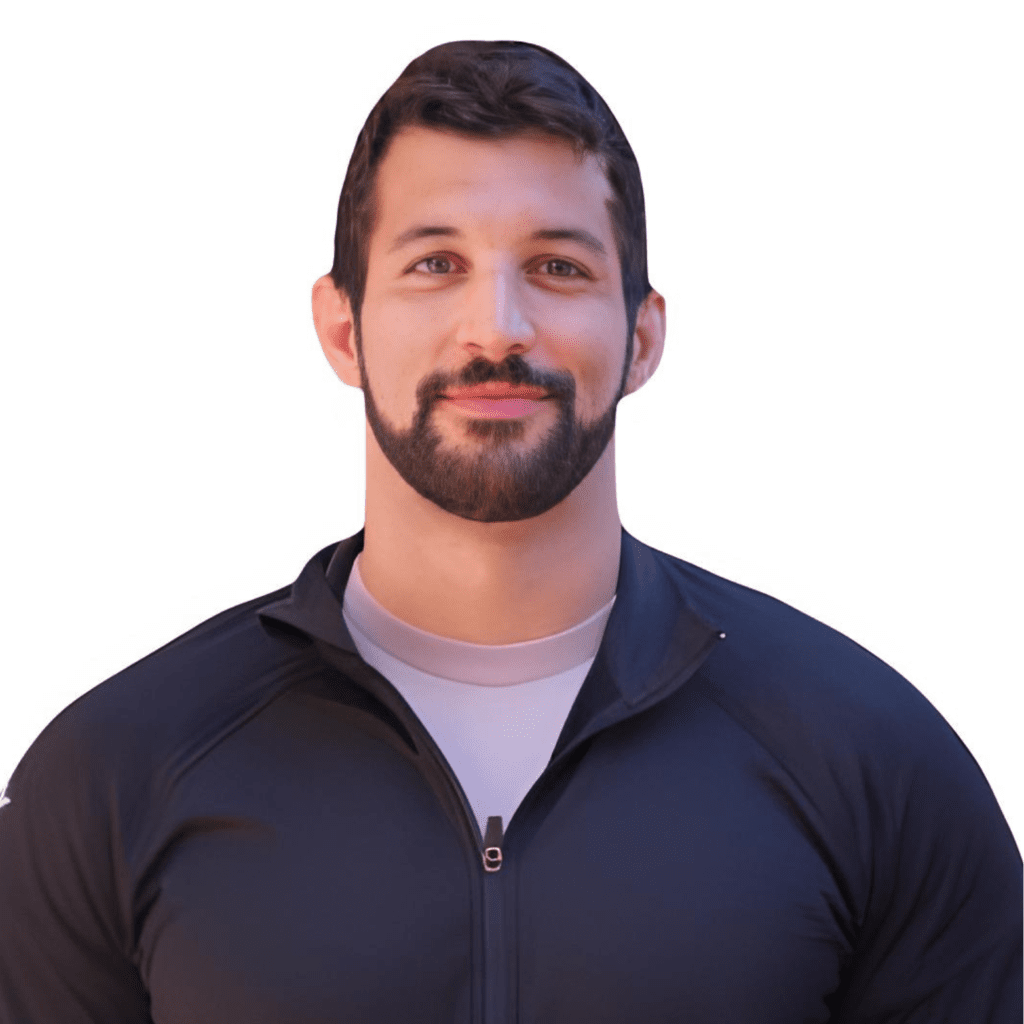
Jordan Blake
I am a seasoned Pilates instructor with 12+ years of expertise,
crafts transformative fitness journeys by blending mindful movement, dance, and physical therapy insights. My approach focuses on building strength, enhancing flexibility, and deepening body awareness, guiding clients toward a balanced and empowered lifestyle.


